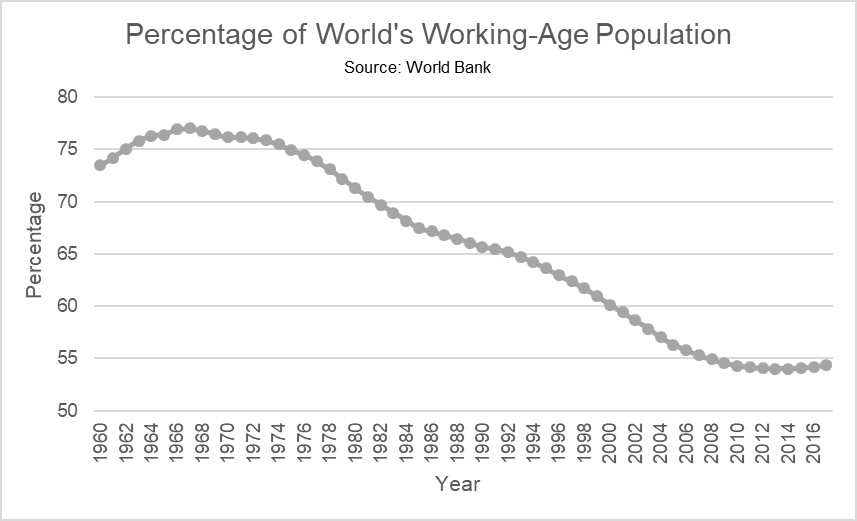Five Things to Know About Population Growth and What it Means for 9 Billion Schools
The 9 Billion Schools movement was born of the idea that there would be nine billion people inhabiting the planet by the year 2050. And, when there are nine billion people, there should be nine billion places of learning—each person should be a school unto themselves and taking charge of their learning and growth.
In the spirit of continuous learning, we’re always keeping an eye on population projections and the impact that has on the earth’s resources. Population tracking is tricky—no one could have predicted the baby boom 30 years before it happened—and there’s some question as to whether or not we’ll hit nine billion by 2050. Regardless of when we hit that milestone, the 9 Billion Schools’ mission will stay the same. Here’s what we know about the population, and what we’re doing about it.
The U.S.’s birthrate and fertility rate are down
Fertility rates track the average number of children a woman would have over the course of her lifetime.
The general fertility rate hit a record low and the birthrate for almost every group of reproductive-aged woman in the U.S. fell in the year 2017, the Centers for Disease Control and Prevention (CDC) reported. This is the largest single-year birthrate decline since 2010, and the lowest number in 30 years. The CDC regularly considers this information and then calculates a “total fertility rate” by estimating the average number of children women will have in their lifetimes. That rate has been below replacement level for 30+ years. In other words, the U.S. is not having enough children to sustain its population. For better or worse, this trend is common among developed countries.
Though lower domestic birth and fertility rates might sound alarming, the populations of developing countries are surging, especially those in Africa. This means that overcrowding and resource scarcity will remain a problem, and focusing on education’s role in ensuring all people can flourish is as important as ever
But, the population is hard to predict
There are different ways to measure fertility and, depending on how you slice it, the U.S. is and is not at an all-time low. Yes, the general fertility rate is at a record low and once fertility rates fall below replacement level the trend continues, but dramatic headlines about population decline shouldn’t worry us too much. After all, the fertility rate is influenced by demographic, social and economic factors which make both the domestic and global population hard to predict. Any number of national or global events could cause a huge shift in birth rates.
“The ambiguity of population predictions and factors that we can’t control, should invigorate us to control what we can. ”
The ambiguity of population predictions and factors that we can’t control, should invigorate us to control what we can. Even today, the world is a crowded place where an individual’s occupation plays a huge part in how they navigate life. In turn, education plays a foundational role in what occupations one can pursue. We are all powerful to change how we think about education, learning and human dignity.
So while we can’t say with absolute certainty what the population will be 30 years from now, we can say that—without a doubt—technological changes alongside even current population levels demand an emphasis on the power of the individual. Although we may be tempted to feel lost in the size of the world’s population tomorrow, we have the power to start conversations about 21st Century skills, traditional education and our technological future, today.
Worldwide, more education means lower fertility rates
If every woman in the world received a secondary education, the population could be 3 billion less than it otherwise would be in 2050. Better education correlates with a decline in fertility rates. Widespread education and women’s economic independence begins to explain why replacement fertility rates are low worldwide. In the U.S., however, it’s a slightly different story. Here, women with education beyond a Bachelor’s degree currently have higher fertility rates than women with only an undergraduate degree. On the whole, however, there’s a clear global correlation between increased education and decreased fertility rates.
This creates a scenario where the solution of individualized, L3 education builds upon itself. As we focus on revolutionizing how we learn in response to automation and population growth, the act of education both empowers individuals to navigate the changing landscape and begins to counteract unsustainable population growth itself.
Populations are getting older, and labor-force numbers are declining
As a result of a low birthrate and fertility rates below replacement level, the global population is aging rapidly. Almost 25 percent of the population of all regions of the world (except Africa) will be 60 and above by 2050. China’s population of those 65 and older is projected to be 33 percent by mid-century. Below-replacement fertility and smaller populations has its benefits, such as lessening the strain on natural resources, higher labor force participation and greater educational opportunities. However, fewer young people means a decline in the world population over time and a decline in the labor-force; creating a cascading effect for healthcare and other industries.
That’s why it’s important for learning to take place across the spectrum of life, from cradle to grave. Populations aged 60 and above are growing, in part, due to longer lifespans. There have never before been more opportunities for individuals in their later years to learn something entirely new and, perhaps, even start a business or launch an encore career. Meanwhile, the aging population creates more opportunities for young people—with the right training and skills—to take the baton and fill the pipelines of careers aging populations are leaving behind.
No one has said “no” to nine billion
Despite all of the talk about low birth- and fertility rates, no one is saying the world’s population won’t be nine billion by 2050. Some sources are even predicting the population will be nine billion by 2037 and 10 billion by 2055 (make way for one billion more schools).
In the end, 9 Billion Schools’ thinking and goals remain the same—the future is with the world, though our mission starts in the U.S.; we have an untapped power to change the conversation about education and learning. We’ll continue working until we’ve realized a world with personalized, lifelong learning for all.







